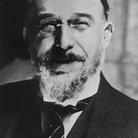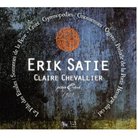How To Buy Erik Satie's Trois Gymnopédies
Lovers of Erik Satie’s exquisite piano music would baulk at the mere suggestion that his later pieces are just mood-setting background music. In fact, it was he that inferred this by describing some of them as “furniture music”; the Trios Gymnopédies unsurprisingly don’t fall into this category.
The word “gymnopédies” originally referred to the ancient Greek dances honouring Apollo performed by naked youths over a period of a few days. Satie’s take on these was written in 1888 and is considered by many to have laid the groundwork for today’s so-called “ambient music”.
Many arrangements have been made of Satie’s deliciously atmospheric pieces, with Debussy’s orchestrations of the first and third arguably the most respected. Our first contender for best recording is from the Italian pianist Aldo Ciccolini who was born in 1925, coincidentally the year of Satie’s death.
It was Ciccolini who, in the 1960s, helped spark new interest in the idiosyncratic French composer’s music. His performances are suitably lyrical but are marred by an extremely noisy background which spoils an otherwise attractive reading.
No such problems with the Singaporean Yitkin Seow on Hyperion, where the quiet atmosphere and totally natural piano sound enhance Seow’s obvious affinity with this music. His eloquent phrasing, especially in the first and third, is particularly attractive, as it is in the recording from our third and slowest contender, Anne Queffélec.
The Paris-born pianist takes a very relaxed view, so if you want a good wallow then this is the one for you. Her account of the third Gymnopédie is a generous palette of pastel colours and aptly demonstrates the music’s ethereal qualities.
Queffélec’s compatriot Pascal Rogé is her equal in conveying these characteristics, but is less broad in terms of tempi. His interpretation oozes class and the ever popular first piece is handled with the utmost sensitivity.
It’s worth pointing out that Rogé’s recording is also available on Decca’s Originals series, but it doesn’t contain the continuation of his outstanding survey of Satie’s music available on the compilation album reviewed here.
One pianist who has recorded every single note of the composer’s piano oeuvre is the Italian Cristina Ariagno. She imparts more than a splash of authority in these three most affectionate of Satie’s pieces, and the generous acoustic certainly highlights her forthright performances. Altogether, she proves a worthy candidate with her obvious love of this music.
This trio of unique compositions has certainly grown in popularity over the years and a pianist who has helped to cement this is Pascal Rogé. The music may be slight, but his pianism is anything but and his version is rightly the crème de la crème.
THE RECORDING TO OWN
Pascal Rogé (piano)
Pascal Rogé has a certain je ne sais quoi when it comes to the music of his native France. This recording of Satie’s most popular works is undeniably one to cherish.
Decca 458 1052
ALSO CONSIDER…
■ Aldo Ciccolini (piano)
Noisy acoustic apart, this is imaginative and charming.
EMI Great Recordings of the Century 567 2392
■ Anne Queffélec (piano)
Ultimate chill-out recording and certainly mood setting, but not necessarily as just background music.
Virgin Classics 522 0502
■ Yitkin Seow (piano)
A beautifully constructed interpretation enhanced by a gloriously captured piano sound.
Hyperion Helios CDH 55175
■ Cristina Ariagno (piano)
This is Satie with more brush strokes than most, but nonetheless effective.
Brilliant Classics 93559






